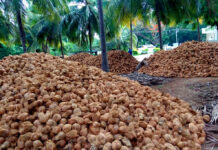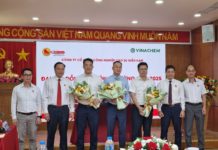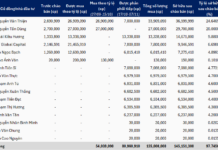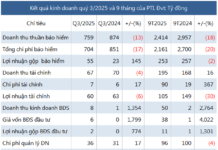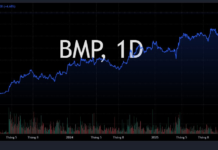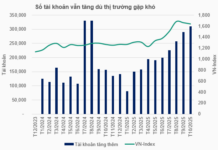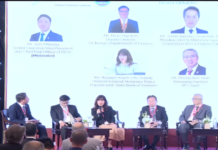The Ministry of Construction has issued Announcement No. 374/TB-BXD, outlining the conclusions of Deputy Minister Pham Minh Ha at a meeting regarding the pre-feasibility study report for the investment project of Can Tho 2 Bridge and its approach roads.
Deputy Minister Pham Minh Ha tasked the My Thuan Project Management Board with directing the consulting unit to fully incorporate feedback from agencies and experts to finalize the dossier.
The study must thoroughly analyze economic and technical indicators, providing a basis for proposing connection schemes with the My Thuan – Can Tho Expressway. This ensures smooth traffic organization, aligns with design flow, minimizes land acquisition, and reduces site clearance volumes.

Combining road and rail construction for Can Tho 2 Bridge saves approximately VND 5,000 billion.
Regarding the investment plan, the Ministry of Construction leaders agreed on constructing Can Tho 2 Bridge as a high-speed road combined with the Hau River crossing bridge for the Ho Chi Minh City – Can Tho railway line, saving around VND 5,000 billion.
During dossier completion, the phased investment plan for railway components must be clarified to preliminarily calculate the total investment.
Regarding the scale of Can Tho 2 Bridge, Deputy Minister Pham Minh Ha approved a 6-lane main bridge (each lane 3.75m wide), with a design speed of 100 km/h. To save costs, no emergency stopping lanes will be placed on the main bridge, and the vertical clearance will match the existing Can Tho Bridge.
The Ministry of Construction selected a cable-stayed structure for the main bridge, with an expected main span of 450m and a steel truss design.
The approach roads and ramps will be built to a complete 6-lane scale (each lane 3.785m wide), including emergency stopping lanes, and a design speed of 100 km/h.
The Vinh Long approach will be built at a lower elevation to reduce construction costs, while the Can Tho approach will be elevated to enhance community connections, support urban development, industrial zones, ports, and land exploitation along both sides.
Regarding the implementation schedule, the Ministry of Construction plans to commence the Can Tho 2 Bridge and approach roads project in 2027, with completion and operation expected within 5 years.
According to Deputy Minister Pham Minh Ha, Can Tho 2 Bridge is a large-scale project with complex technical requirements, marking the first implementation of its kind in Vietnam. Therefore, the My Thuan Project Management Board, in collaboration with the Railway Project Management Board, should proactively consult experienced foreign units in large-span cable-stayed structures combining road and rail (if necessary).
Previously, the My Thuan Project Management Board submitted a proposal to the Ministry of Construction for reviewing and appraising the pre-feasibility study report for the Can Tho 2 Bridge and approach roads project.
The project starts at the Cha Va intersection (Vinh Long), connecting to the My Thuan – Can Tho Expressway, and ends at IC2 intersection (Can Tho), linking to the National Highway 91 – Nam Song Hau connector. It also serves as the starting point for the Can Tho – Hau Giang – Ca Mau Expressway.
The total project length is approximately 17.2 km, including 11.9 km of approach roads and ramps in Vinh Long (Binh Minh, Cai Von, and Dong Thanh wards), a 1.1 km main bridge over the Hau River, and 4.2 km of ramps and embankments in Can Tho (Hung Phu ward).
The main bridge features a cable-stayed design with a 300m navigation span, and the approach roads meet expressway standards.
The My Thuan Project Management Board proposed two implementation options:
Option one involves constructing separate high-speed road and railway bridges, with a preliminary total investment of VND 24,265 billion. This includes VND 16,817 billion for construction and equipment, VND 1,682 billion for project management, consulting, and other costs, VND 3,098 billion for contingencies, and VND 2,668 billion for compensation, support, and resettlement.
Option two involves building a combined road and railway bridge, with an investment of approximately VND 28,455 billion. This includes VND 19,646 billion for construction and equipment, VND 1,965 billion for project management, consulting, and other costs, VND 3,739 billion for contingencies, and VND 3,225 billion for compensation, support, and resettlement.
Once operational, Can Tho 2 Bridge will connect the My Thuan – Can Tho and Can Tho – Ca Mau Expressways, completing the Mekong Delta’s transportation network, reducing pressure on National Highway 1, ensuring traffic safety, and driving socio-economic development in the Southwest region.
“Forgotten” Expressway Service Road: Mỹ Thuận – Cần Thơ Highway
The Mỹ Thuận – Cần Thơ Expressway segment passing through Vĩnh Long has been operational, yet only one side features a service road for local residents, leaving the other side without. As a result, several households have abandoned their farmland, unable to access it with machinery for cultivation.
The House of Representatives Standing Committee Approves the 2025 Budget Adjustment for the Ministry of Construction
Under the stewardship of Vice Chairman Nguyen Duc Hai, the afternoon session on September 5th concluded with a decision to reduce the Ministry of Construction’s budget by over VND 1,400 billion. This substantial reallocation of funds will be directed towards local governments, ensuring compliance with legal regulations and jurisdictional authority.
“National Housing Fund: Renting Made Easy, Secure, and Guaranteed. No Sales or Reselling Allowed.”
“As stated by Deputy Finance Minister Do Thanh Trung, Resolution No. 201/2025/QH15 introduces a pilot program with specific mechanisms and policies for developing social housing. This resolution underscores the nature of this fund as a rental-only initiative, implying a one-way flow where tenants can move in but not exit through a sale. In other words, this fund is not intended for real estate trading; instead, it exclusively supports rental services, funded by the state budget and legitimate contributions from other sources.”



